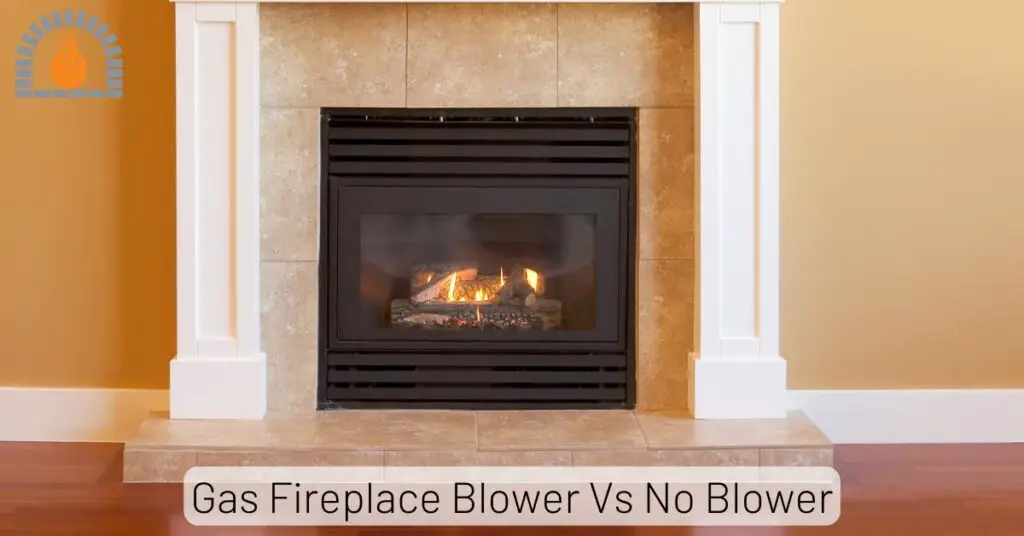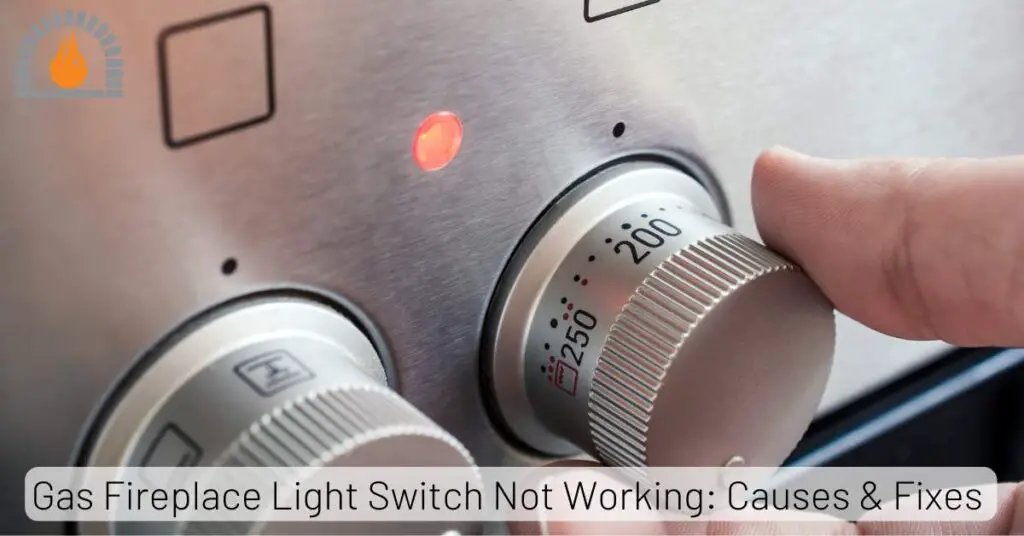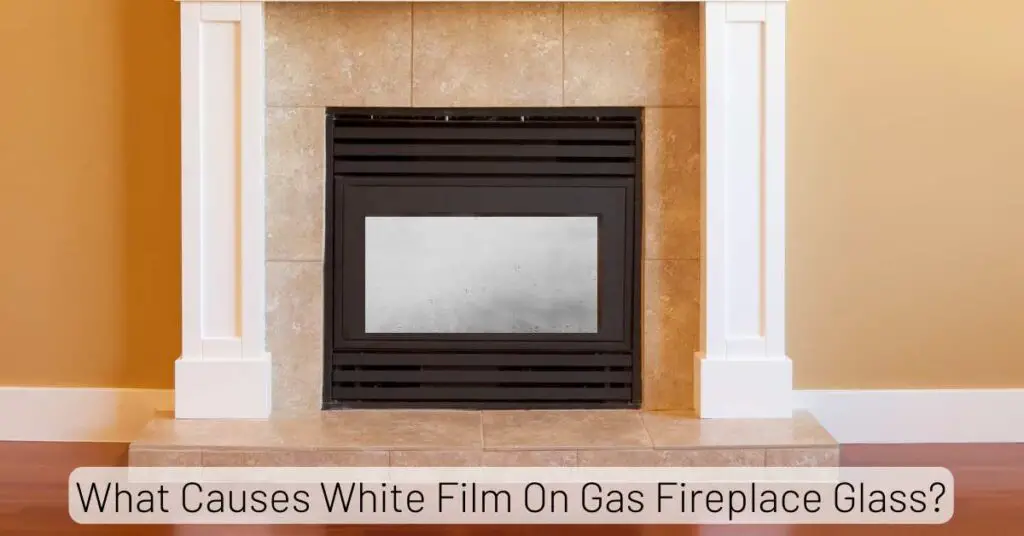If you’re a homeowner lucky enough to have a gas fireplace, you might wonder whether running it without a fan is safe and efficient. Gas fireplaces have become popular for adding warmth and ambience to homes, and understanding their features and functionalities is essential.
Overview
Can I run my gas fireplace without the fan? Yes, you can typically run a gas fireplace without the fan if your fireplace has that option. The fan in a gas fireplace is usually used to circulate the warm air produced by the flames throughout the room, which can help to distribute heat more evenly and efficiently.
However, running the fireplace without the fan might result in slightly less effective heat distribution, as the warm air will naturally rise and spread on its own.
Pros of Running a Gas Fireplace Without the Fan
- One of the main benefits of running your gas fireplace without a fan is its serene ambience. Without the fan’s noise, you can enjoy the calming crackling sounds of the burning gas and the gentle flickering of the flames.
- Operating the fan in your gas fireplace requires electricity.
- By operating the fireplace without utilizing the fan, you can effectively lower your energy consumption. This, in turn, will lead to a reduction in your energy bills.
- Like any other mechanical component, the fan in a gas fireplace requires regular maintenance. By not using the fan, you can cut down on maintenance tasks and costs associated with its upkeep.
Cons of Running a Gas Fireplace Without the Fan
- The fan in a gas fireplace is responsible for distributing heat evenly throughout the room. Without the fan, you might experience uneven heat distribution, with areas closer to the fireplace warmer than those farther away.
- Gas fireplaces are designed to provide efficient heat output. Running the fireplace without the fan can decrease its overall efficiency, as less heat is being circulated.
- The fan helps in spreading warmth to a larger area. Operating the fireplace without the fan might result in a limited range of warmth, which could be a concern during colder months.
How Long Can You Run A Gas Fireplace Without the Fan?
The duration you can safely run a gas fireplace without the fan can vary based on factors such as the fireplace model, the design, and the manufacturer’s recommendations. Generally, running a gas fireplace without a fan is safe for short periods, such as when you want to enjoy the visual ambience of the flames without the fan noise.
However, if you plan to run the fireplace for an extended period without the fan, you should be cautious and consider the following points:
Heat Distribution
The fan is designed to help distribute heat evenly throughout the room. The heat might be distributed effectively with the fan, leading to localized hotspots near the fireplace.
Overheating
Gas fireplaces are equipped with safety features to prevent overheating. Without the fan to help dissipate heat, the fireplace’s internal components could become too hot.
Efficiency
The fan assists in maximizing the fireplace’s efficiency by pushing warm air into the room. Running the fireplace without the fan might result in less efficient heat transfer.
Manufacturer Guidelines
Refer to the manufacturer’s guidelines and user manual for your specific fireplace model. They will provide recommendations about operating the fireplace with or without the fan.
Safety Precautions for Using Gas Fireplace
Using a gas fireplace can provide warmth and ambience to your home, but it’s important to follow safety precautions to prevent accidents and ensure the well-being of your household.
Here are some safety precautions to keep in mind when using a gas fireplace:
- Familiarize yourself with the manufacturer’s instructions and guidelines for operating your specific gas fireplace model. Follow these instructions carefully.
- Ensure your fireplace is installed by a certified professional. Proper installation is crucial to prevent gas leaks and ensure proper ventilation.
- Ensure the safety of your household by installing carbon monoxide detectors within your residence, with particular attention to placing them near any gas fireplaces. Given that carbon monoxide is both odourless and colourless, the presence of detectors becomes paramount in promptly identifying potential leaks.
- Make sure your fireplace is properly vented. Ventilation systems help remove harmful gases and ensure proper air circulation. Keep the vents unobstructed at all times.
- Schedule annual inspections by a professional technician. They can check for any potential issues, leaks, or maintenance requirements.
- If there is a suspicion of a gas leak (indicated by the smell of rotten eggs, hissing noises, etc.), it’s crucial to evacuate your premises swiftly. Leave doors and windows ajar to facilitate ventilation, and from a secure location, reach out to your gas company or emergency services without delay.
- Use safety screens or barriers to prevent children and pets from getting too close to the fireplace. The glass panel on the front of the fireplace can become extremely hot.
- Keep flammable materials, such as paper, cloth, and decorations, away from the fireplace area.
- Maintain proper clearances around the fireplace. Follow the manufacturer’s recommendations for safe distances between the fireplace and any surrounding materials.
- The glass panel on a gas fireplace can get very hot during operation. Keep children and pets away from it, and avoid touching it directly.
- Only use the approved fireplace grates and logs that come with your gas fireplace. Using improper accessories can lead to malfunctions or safety hazards.
- Never leave the fireplace unattended while it’s running. Ensure it’s turned off before leaving the room or going to bed.
- If your gas fireplace comes with a remote control or ignition system, keep it out of the reach of children and ensure it’s used responsibly.
- Regularly clean the glass panel and interior of the fireplace following the manufacturer’s recommendations. This can improve efficiency and prevent potential hazards.
- Devise a comprehensive emergency strategy encompassing both the swift shutdown of the gas supply to the fireplace and a well-coordinated evacuation procedure for scenarios involving gas leaks or other unforeseen emergencies.
My Final Thoughts
Running your gas fireplace without a fan is possible, with pros and cons. While it offers a quieter ambience, potential energy savings, and reduced maintenance, it’s essential to consider the downsides, such as uneven heat distribution and lower overall efficiency.
Affiliate Disclosure: Fireplaceadviser.com is a participant in the Amazon Services LLC Associates Program. We may earn a commission when you click on certain links on this site and purchase.

Hello!! I am Jamal Khan. I often fix my home electric heaters and gas stove problems and research the common issues in the heating units to improve my knowledge and expertise. The aim of establishing fireplaceadviser.com is to share my expertise and knowledge with my audience.









